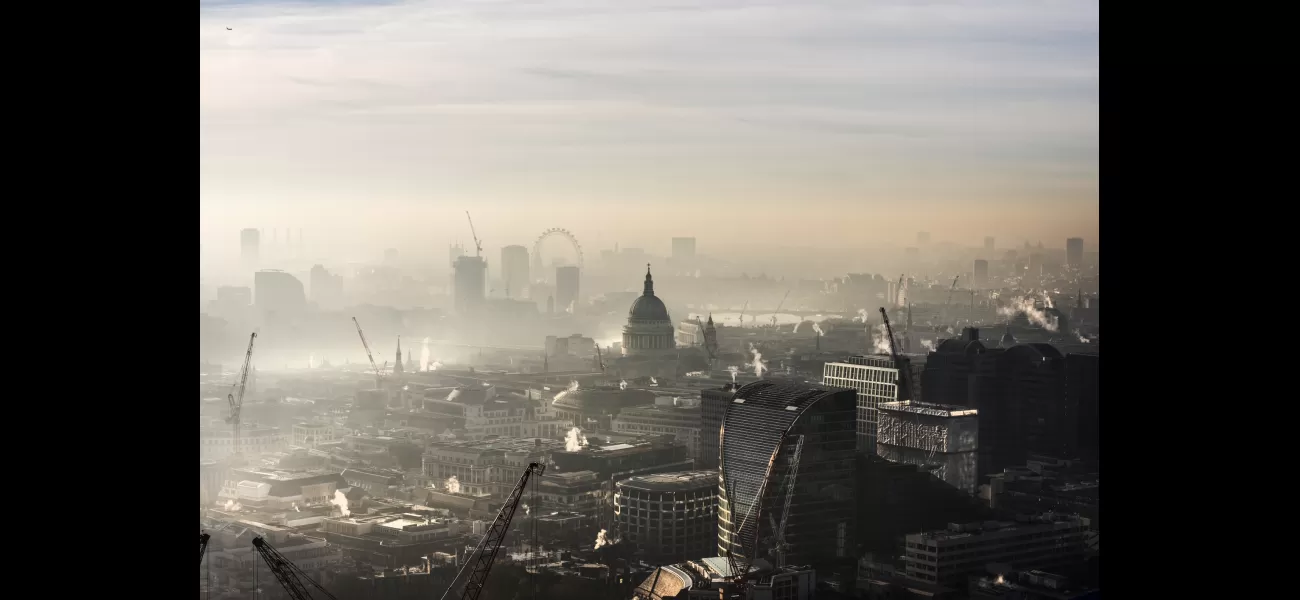Monitor air pollution levels in your London area as ULEZ expands.
ULEZ could be essential to reducing air pollution and improving the environment.
August 20th 2023.

London is often referred to as the Big Smoke, and for good reason. As the end of this month approaches, so does the expansion of the ULEZ, the Ultra Low Emission Zone. This means that London motorists will have to pay a daily charge if their vehicle does not meet the new standards. To help people make the switch to a compliant vehicle, the government has set up scrappage schemes to make it easier.
Although there is much debate and opposition to the ULEZ expansion, the main goal of the initiative is to improve London's air quality. According to London Assembly, the World Health Organization reported that every London outer borough exceeds their safe limit for toxic air particles.
It's important to understand just how bad the air quality is in London and how it is measured. The best way to check the air pollution in your area is with the free report from addresspollution.org. All you need to do is enter your postcode and it will generate a detailed report with the most accurate air pollution data available. This data is pulled from a national 20m/sq resolution model created by Imperial College London and is based on real world pollution levels recorded at 19,500 council monitors across the UK.
The report will show your local area as a certain colour. White means that the address is within the 0th-19th percentile, and is considered low in terms of air pollution. Yellow means that the address is within the 20th-39th percentile, and is considered medium. Orange means that the address is within the 40th-59th percentile, and is considered significant. Red means that the address is within the 60th-79th percentile, and pollution levels are considered high. Lastly, purple means that the address is within the 80th-99th percentile, and pollution is considered very high.
The report looks at two different types of pollutant and their respective levels. The first is particulate matter, which is a common proxy indicator for air pollution. It affects more people than any other pollutant and includes elements such as sulfate, nitrates, ammonia, sodium chloride, black carbon, mineral dust and water. The second is nitrogen dioxide, which is mainly produced from the combustion of fossil fuels and comes mainly from road transport. Exposures to NO2 can contribute to the development of asthma and could increase susceptibility to respiratory infections.
The ULEZ expansion is set to help combat the unsafe air pollution levels in London boroughs, making London a safer and healthier place to live. For more information on how this could impact you, visit the Central Office of Public Interest website and generate a free report for your postcode. It's time to take action to improve the air quality in London and make the Big Smoke a thing of the past.
Although there is much debate and opposition to the ULEZ expansion, the main goal of the initiative is to improve London's air quality. According to London Assembly, the World Health Organization reported that every London outer borough exceeds their safe limit for toxic air particles.
It's important to understand just how bad the air quality is in London and how it is measured. The best way to check the air pollution in your area is with the free report from addresspollution.org. All you need to do is enter your postcode and it will generate a detailed report with the most accurate air pollution data available. This data is pulled from a national 20m/sq resolution model created by Imperial College London and is based on real world pollution levels recorded at 19,500 council monitors across the UK.
The report will show your local area as a certain colour. White means that the address is within the 0th-19th percentile, and is considered low in terms of air pollution. Yellow means that the address is within the 20th-39th percentile, and is considered medium. Orange means that the address is within the 40th-59th percentile, and is considered significant. Red means that the address is within the 60th-79th percentile, and pollution levels are considered high. Lastly, purple means that the address is within the 80th-99th percentile, and pollution is considered very high.
The report looks at two different types of pollutant and their respective levels. The first is particulate matter, which is a common proxy indicator for air pollution. It affects more people than any other pollutant and includes elements such as sulfate, nitrates, ammonia, sodium chloride, black carbon, mineral dust and water. The second is nitrogen dioxide, which is mainly produced from the combustion of fossil fuels and comes mainly from road transport. Exposures to NO2 can contribute to the development of asthma and could increase susceptibility to respiratory infections.
The ULEZ expansion is set to help combat the unsafe air pollution levels in London boroughs, making London a safer and healthier place to live. For more information on how this could impact you, visit the Central Office of Public Interest website and generate a free report for your postcode. It's time to take action to improve the air quality in London and make the Big Smoke a thing of the past.
[This article has been trending online recently and has been generated with AI. Your feed is customized.]
[Generative AI is experimental.]
0
0
Submit Comment





